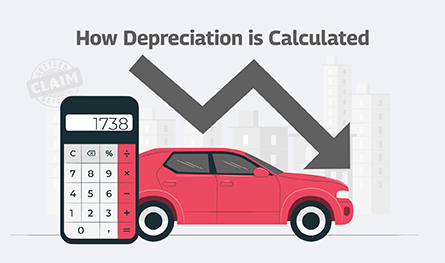Related Articles
 Jan 08, 2025
Jan 08, 2025
Is Varicose Vein surgery covered under the health insurance policy in India
 Health Insurance
Health Insurance
Copay, Coinsurance and Deductible are important terms in health insurance that most people are not familiar with. Let us take a look at these terms in this post to understand their differences.
Understanding all the terms and jargons related to health insurance and how they affect your policy may not be possible for the common man. Some such tricky terms like copay, deductible and coinsurance are such that many people do not know much about them, especially people who do not have enough experience and knowledge of insurance. So, let’s see the difference between copay, deductible and coinsurance to understand their meaning better.
Copay is the short form of Copayment. Copay meaning in health insurance is a sum of money that the policyholder must pay while claiming for a healthcare service such as doctor visits, prescriptions, urgent care, emergency room visit etc. The copay contribution is a fixed amount that is predetermined at the time of buying the policy.
For instance, let’s say the copay fixed is 10%. Now, let’s say the cost of health service claimed is INR 10,000. So, the insured has to pay 10% of INR 10,000, which is INR 1000 to your insurer, while the rest INR 9000 would be paid by the insurer.
No, they are not necessarily used by all health insurance plans. Depending on the coverage offered and the particular plan, it may have deductibles or coinsurances along with copays. On the other hand, some specific conditions and services may be settled without any out-of-pocket charges being levied on the insured.
Deductible is a fixed amount of money paid by the insured before his/her health insurance policy starts paying for claims. So, here, the insured has to pay a fixed amount before they start receiving insurance coverage. Deductible amounts might vary depending on individual and family floater coverage. However, having a considerably small deductible is common in most health insurance plans.
For example, if the deductible amount on your health plan is INR 5000, you must pay that amount first before expecting contributions from the insurance company for your claims.
Coinsurance meaning in health insurance is a portion of your healthcare bill that is settled by the policyholder after meeting their deductibles, while the rest is settled by the insurer. So, coinsurance in medical billing implies that the policyholder and the insurer share a particular medical expense. For instance, if your plan offers an 80:20 ratio of coinsurance, it means that the policyholder pays 20% of the bill amount, while the rest 80% is paid by the insurance company.
Out-of-pocket limit is an expense that the insured has to pay annually on their insured healthcare costs. This is the total amount of money spent on different features such as deductibles, copays and coinsurances. The health insurance company pays for the remaining costs after the insured reaches the maximum out-of-pocket limits per year on their health insurance plan.
Let’s take a look at the differences between these variables – copay, coinsurance, deductible -in the table below:
| Copay | Coinsurance | Deductible |
| Copay is a set amount that is paid by the insured for charges such as prescriptions, doctor visits etc. | Coinsurance is the percentage of cost that is paid by the insured after meeting his/her deductible amount | A deductible is the set sum of money paid by the insured for various healthcare services before the insurer starts paying for the policy |
| Copay varies depending on the type of treatment or visit | This amount is generally smaller than copay depending on the service/procedure | Insurer starts paying for claims only after deductibles are met |
| Copays doesn’t count towards deductibles, rather they count towards the maximum out-of-pocket limit per year | Coinsurances only apply to insured services under your health plan. It doesn’t consider services not covered by the plan | Individual deductibles are charged for dependent members under family floater policies, making the amount higher |
| Mostly paid before meeting deductible | Paid after meeting deductible | Deductibles has to be paid first before the insurer starts paying for the policy |
If you prefer to buy a cost-sharing insurance plan, there are some advantages and limitations available at the same time. For instance, buying a cost-sharing plan may lower your premium amount, but it will make you obliged to share a portion of the healthcare bill upon claim filing. So, it will imply that you would require cash to pay that amount, which might be a cause of concern at times. Hence, it is up to the policyholder to choose an insurance plan with or without cost-sharing options depending on his/her needs and preferences.
A copay is a fixed amount that is likely to be paid by the insured for a particular insured service. Conversely, a policyholder is expected to pay coinsurance as a percentage for the cost of a particular service after paying the deductibles. Both copay and coinsurance apply in varied situations, while they are associated with your health insurance plan.
Coinsurance is paid after the policyholder has paid his/her share of deductible. Hence, deductible comes first.
A deductible is a fixed percentage for a healthcare service, while coinsurance is a percentage shared on the entire claim amount. Deductibles are normally required to be paid a single time a year, coinsurance may accrue on the insured till he/she reaches the out-of-pocket limit.
If you have low coinsurance, you will have a lower share to be paid on the bill amount claimed even if your premium is high. On the other hand, with high coinsurance your premiums will be low but you may have to pay a huge chunk of the total bill amount at the time of making claims.
Health insurance copay does not apply to the deductible. In fact, copays are regarded as out-of-pocket insurance expenses.


Paybima Team
Paybima is an Indian insurance aggregator on a mission to make insurance simple for people. Paybima is the Digital arm of the already established and trusted Mahindra Insurance Brokers Ltd., a reputed name in the insurance broking industry with 17 years of experience. Paybima promises you the easy-to-access online platform to buy insurance policies, and also extend their unrelented assistance with all your policy related queries and services.
So, you’ve crossed the fabulous 60 mark. Retirement may be on the cards, your kids might be off doing their own thing, and suddenly your knees are making more noise than your WhatsApp notifications. Welcome to the senior citizen club.
Now let’s talk about something most of us tend to postpone until a doctor gives us a reality check: health insurance. If you are wondering whether buying health insurance after 60 makes sense, the answer is a loud and clear yes. This article will cover everything you need to know about it, how it makes sense, how it differs from health insurance for young adults, and what you need to look out for when checking for medical insurance above the age of 60.

.png)
April 2 is observed as World Autism Awareness Day and there is no better way to observe the day than to raise awareness of this condition and to promote kindness towards autistic people. Read on to know more.


Car depreciation implies the difference between the cost of a car at the time of buying the car and when you sell it. A car insurance claim amount is determined by the car depreciation rate. The car depreciation rate is the reduction in the value of your car over its lifespan caused by wear and tear.


Fixed Deposits (FDs) are one of the safest ways to grow your savings. HDFC Bank offers attractive FD interest rates, allowing you to earn guaranteed returns on your investment. But before you invest, it's important to know how much interest you will earn and what your final maturity amount will be.


If you think of life insurance, chances are you are picturing something people buy in their 30s or 40s. But what if you are 65 or older and just getting started? The good news is that you are never too late. Whether you are thinking of easing the financial burden on your family, covering final expenses, or simply leaving behind a legacy, there are life insurance options tailored just for you.
This article will be a guide to life insurance for senior citizens above 65 years, explaining why it is important, the type of insurance options, and how to get the right policy for you.
